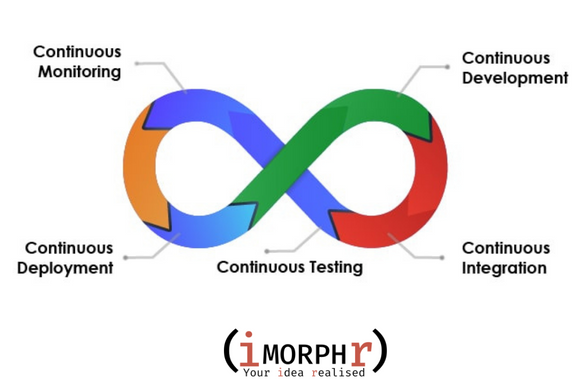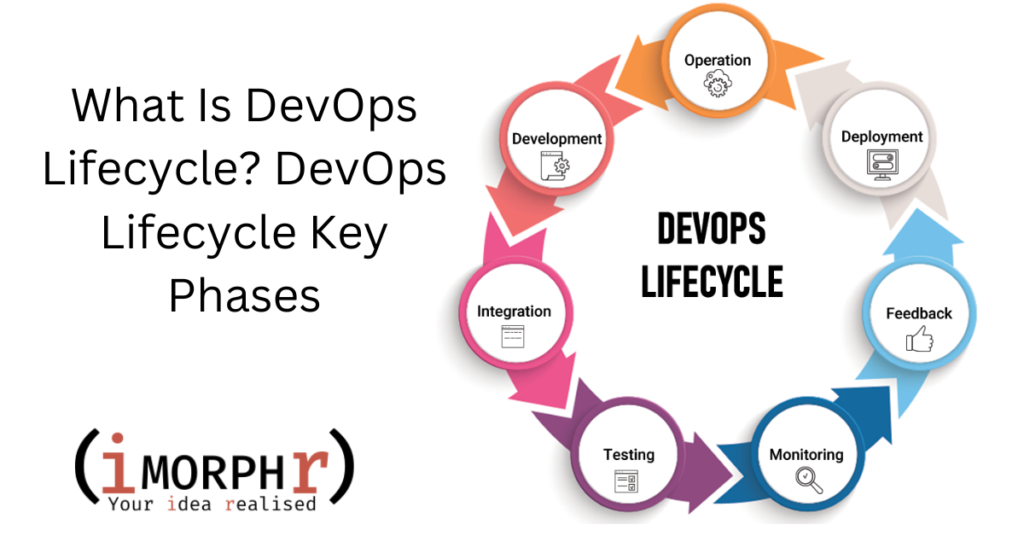
DevOps is the result of applying Lean Principles to the technology value stream with the help of Flow, Feedback, Continuous Learning and Experimentation.
It includes deployment, integration, testing, monitoring and experimenting. A combination of such stages is known as DevOps Lifecycle. If you want to build a world-class agile, reliable and secure technology organisation, then a competent DevOps lifecycle is necessary. In this article, we will talk about DevOps Lifecycle and its key phases.
The approach of DevOps is to bring continuous innovation, scalability, agility and security to the product you are developing, testing and delivering. In short, DevOps promotes a culture of constant learning, feedback, and experimentation to make products and services better. However, it is crucial to properly understand the different phases of the DevOps lifecycle to implement it. If businesses want faster results, they must bring developers who know every phase of the DevOps lifecycle. Let’s break down and analyse every phase of the DevOps Lifecycle. We are sure that you will love reading it till the end!

DevOps Lifecycle Key Phases
The DevOps lifecycle optimises the development process from start to finish to deliver faster results with high-quality work. The entire process mainly has the following phases.
Setup deployment pipeline
The initial phase of the DevOps life cycle is setting up the deployment pipeline. We must make sure that we use a production-like environment at every stage. The environment creation must be automated. One should be able to create such an environment on demand using version-controlled script and configuration. All the knowledge of setting up an environment should be codified and versioned.
Continuous testing
Build quality into the product as early as possible by having developers build automated tests as part of their daily work. This provides fast feedback and helps developers find and fix problems earlier. Test Driven Development is particularly useful not just in testing, but it drives developers to think about code coupling and cohesion.
To achieve continuous testing, we must create automated build and test processes. It can run all the time regardless of the work habits of team members.
Automated testing can happen at any level, even before the changes are accepted by version control (via pre-commit hook).
To have humans execute tests that should be automated is a waste of human potential; instead, human testers should work on testing activities that cannot be automated. E.g. exploratory testing or improving the test process itself.
Continuous integration
Traditionally integration has been done towards the end of the project. It causes significant rework to get back into a deployable state. Resolving the conflict takes longer, and manual intervention is needed. When it takes far longer than planned, we often cut corners to make the release date.
Therefore, we should strive to integrate as often as possible. To enable continuous integration, adopt trunk-based development practice. Frequent code commits to the trunk means we can run all automated tests on our software system as a whole and receive alerts when a change breaks. It would result in less merge conflict due to small and frequent changes.
The frequent commits also force us to break our work into smaller chunks which means more minor changes and continuous testing result in a working releasable trunk.
Continuous deployment
Continuous integration and making code deployment a low-risk process reduce the friction associated with production deployment. It can be performed frequently and quickly by any member of the team. The purpose here is to simplify and automate manual steps such as provisioning, packaging, generating configuration, running automated smoke tests and database migration.
The three key requirements for continuous deployments are:
- To have a consistent and reproducible environment
- Have a good suit of smoke tests and built-in observability for the deployment
- The consistent and automated deployment procedure
Continuous monitoring
Continuous monitoring aims to ensure that our services are correctly operating in production. And when problems do occur, make it possible to quickly determine what is going wrong and make an informed decision on how best to fix it before customers are impacted.
The modern monitoring architecture consisted of tools such as Prometheus, ELK, Splunk, New Relic, Datadog etc. These tools collect data at various layers, including business logic, application, environment and infrastructure.
In the case of the event sources system, events can also be a good source of business metric monitoring. To ensure reliable and secure operations of our services, we should ensure that our significant events are getting logged. Some of the security-related events can be:
- Authentication/Authorization
- System and Data Access
- Data changes
- Invalid inputs
- Resources
- Health and availability
When implemented correctly, it helps improve the system’s productivity and reliability and also cuts down maintenance costs.
Continuous operations
We are not at the end of the DevOps lifecycle – it is one of the easiest and shortest phases. After knowing about all these phases, you will see that continuity is the key to all DevOps operations. It allows developers to detect issues quickly, automate release processes and develop features and functions better. In continuous operations, the Development cycle is shorter, which allows the business to experiment and accelerate the overall time to market the product. To achieve this for your business, you need to contact a DevOps development services provider to stay ahead of your competitors.
